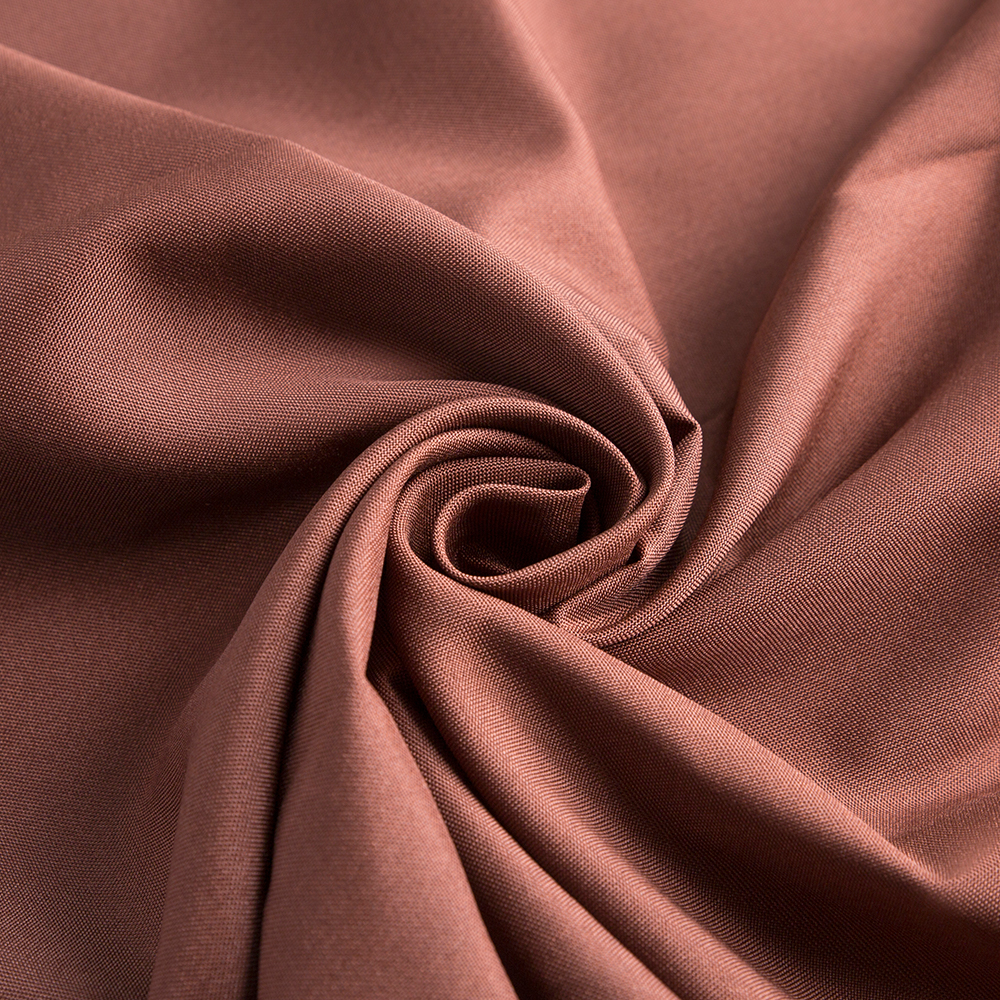Maintaining the softness and appearance of brushed fabrics over the long term requires careful attention to washing, drying, storage, and handling. Brushed fabrics, such as flannel, fleece, or brushed cotton, have raised fibers that can be prone to pilling, matting, and wear if not properly cared for. Here are the best practices to help preserve their texture and appearance:
Proper Washing Techniques:Gentle Washing Cycle: Use a gentle or delicate cycle on your washing machine to minimize friction and agitation that can cause pilling and damage to the brushed fibers.Cold or Lukewarm Water: Wash brushed fabrics in cold or lukewarm water to prevent fiber damage and color fading. Hot water can weaken fibers and lead to shrinkage.
Mild Detergents: Opt for mild, liquid detergents that are free of harsh chemicals and enzymes. Avoid bleach and fabric softeners, as they can damage the fibers and affect the fabric's softness.Inside Out Washing: Turn garments or items made of brushed fabric inside out before washing to protect the surface fibers from friction against other items in the wash.
Minimize Friction and Pilling:Wash with Similar Fabrics: Wash brushed fabrics with similar soft fabrics to avoid friction against rougher materials, such as denim or items with zippers and hooks, which can cause pilling and abrasion.Use a Mesh Laundry Bag: For smaller items, use a mesh laundry bag to provide an extra layer of protection and reduce the risk of pilling and snags.

Proper Drying Methods:Air Dry When Possible: Air drying is the gentlest method for drying brushed fabrics and helps preserve their softness and texture. Lay items flat on a clean, dry surface or hang them on a line away from direct sunlight to prevent fading.Low-Heat Tumble Dry: If using a dryer, select a low-heat or "air fluff" setting to reduce the risk of shrinkage and fiber damage. Remove items promptly to prevent wrinkles.
Avoid Over-Drying: Over-drying can make fabrics stiff and rough. Remove brushed fabrics from the dryer while still slightly damp, and then lay them flat or hang to finish drying.
Gentle Handling and Storage:Avoid Overcrowding in Storage: Store brushed fabrics in a way that prevents them from being compressed or crushed, which can flatten the raised fibers and cause matting.Fold Instead of Hanging: For heavy or delicate brushed fabrics, folding them neatly can help maintain their shape and avoid stretching or sagging that can occur when hung.Use Acid-Free Tissue Paper: When storing for extended periods, place acid-free tissue paper between folded layers to prevent creases and protect the fibers.
Regular Maintenance and Refreshing:Brush the Fabric: Gently brush the fabric with a soft bristle brush to revive the nap and fluff up the fibers that may have become flattened or matted.Remove Pilling: Use a fabric shaver or a pumice stone to gently remove any pilling that may occur on the surface. Be careful not to press too hard, as this can damage the fabric.
Steaming: For fabrics that have become wrinkled or flattened, steaming can help restore the fibers' loft and softness. Use a hand-held steamer or the steam function on an iron held slightly above the fabric (without direct contact).
Protect from Sunlight and Heat:Avoid Direct Sun Exposure: Prolonged exposure to direct sunlight can cause fading and weaken the fibers. Store brushed fabric items in a shaded area or use UV-protective covers.Keep Away from Heat Sources: Keep brushed fabrics away from direct heat sources like radiators, heaters, or prolonged exposure to high temperatures that can cause shrinkage or fiber damage.
Use of Fabric Conditioners and Softeners:Use White Vinegar: A small amount of white vinegar can be added to the rinse cycle to soften the fabric without leaving residue. Vinegar helps neutralize any detergent buildup that can make the fabric feel stiff.Avoid Commercial Fabric Softeners: Commercial fabric softeners and dryer sheets can leave a residue on brushed fabrics, making them feel less soft over time. They may also reduce the breathability of the fabric.
Follow Manufacturer’s Care Instructions:Adhere to Labels: Always follow the specific care instructions provided by the manufacturer, as different brushed fabrics may have different requirements based on their fiber content and construction.
Prevent and Treat Stains Carefully:Prompt Stain Treatment: Treat stains as soon as possible to prevent them from setting into the fabric. Use a mild stain remover and avoid rubbing vigorously, which can damage the brushed fibers.
Consider Professional Cleaning for Delicate Fabrics:Professional Cleaning: For high-quality or delicate brushed fabrics (such as brushed wool or cashmere), consider professional cleaning to ensure proper care without risking damage.
By following these best practices, you can maintain the softness, appearance, and longevity of brushed fabrics, keeping them looking and feeling great for a long time.





 English
English
 中文简体
中文简体










